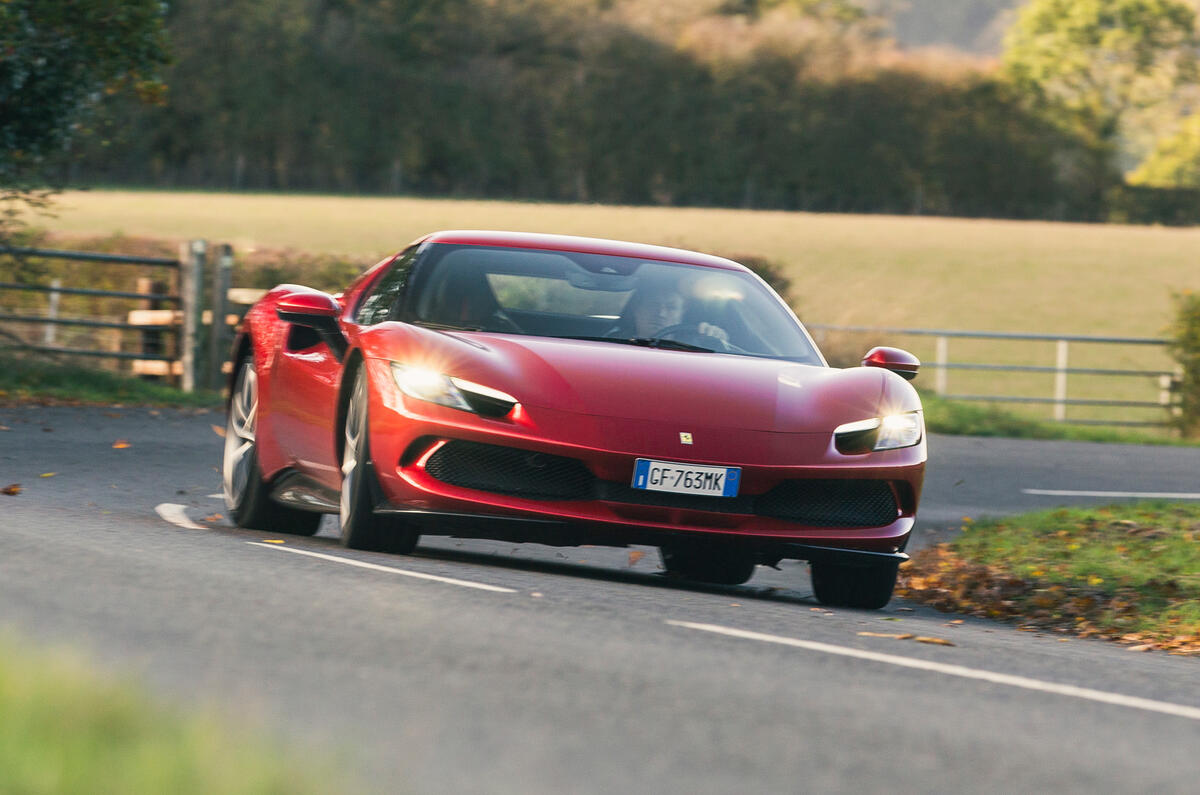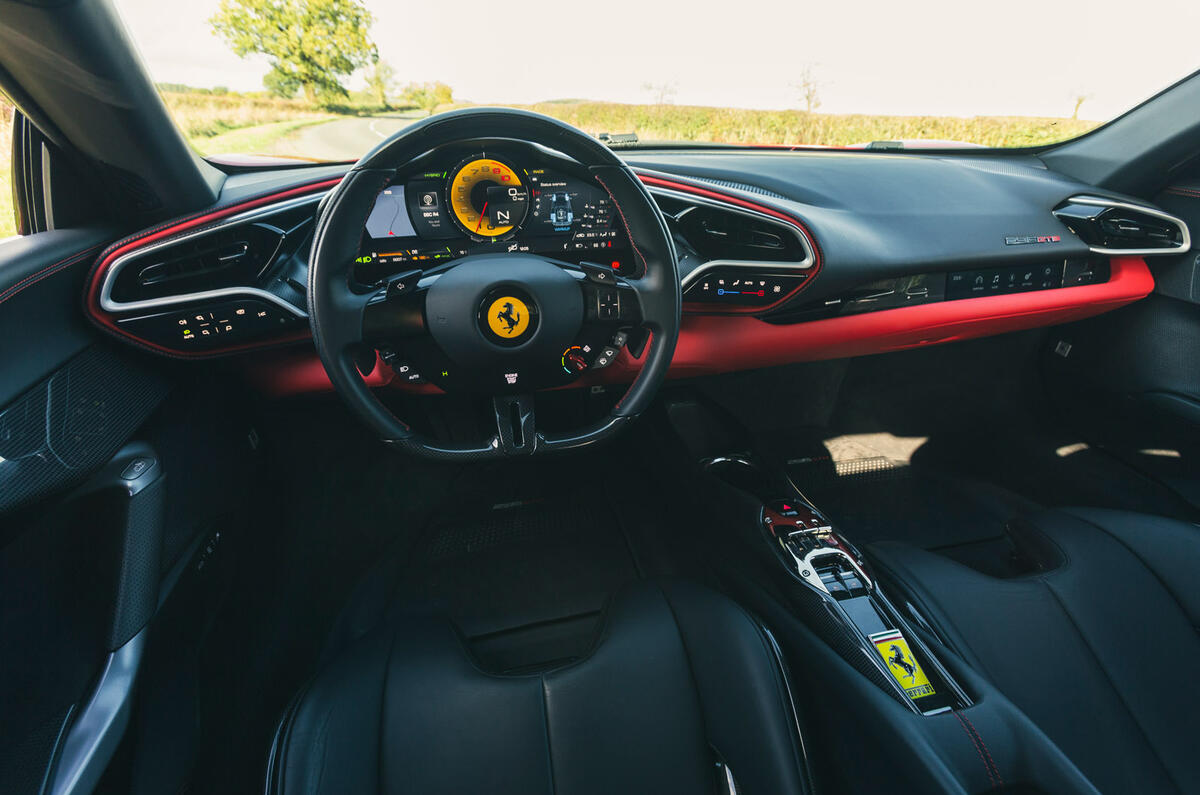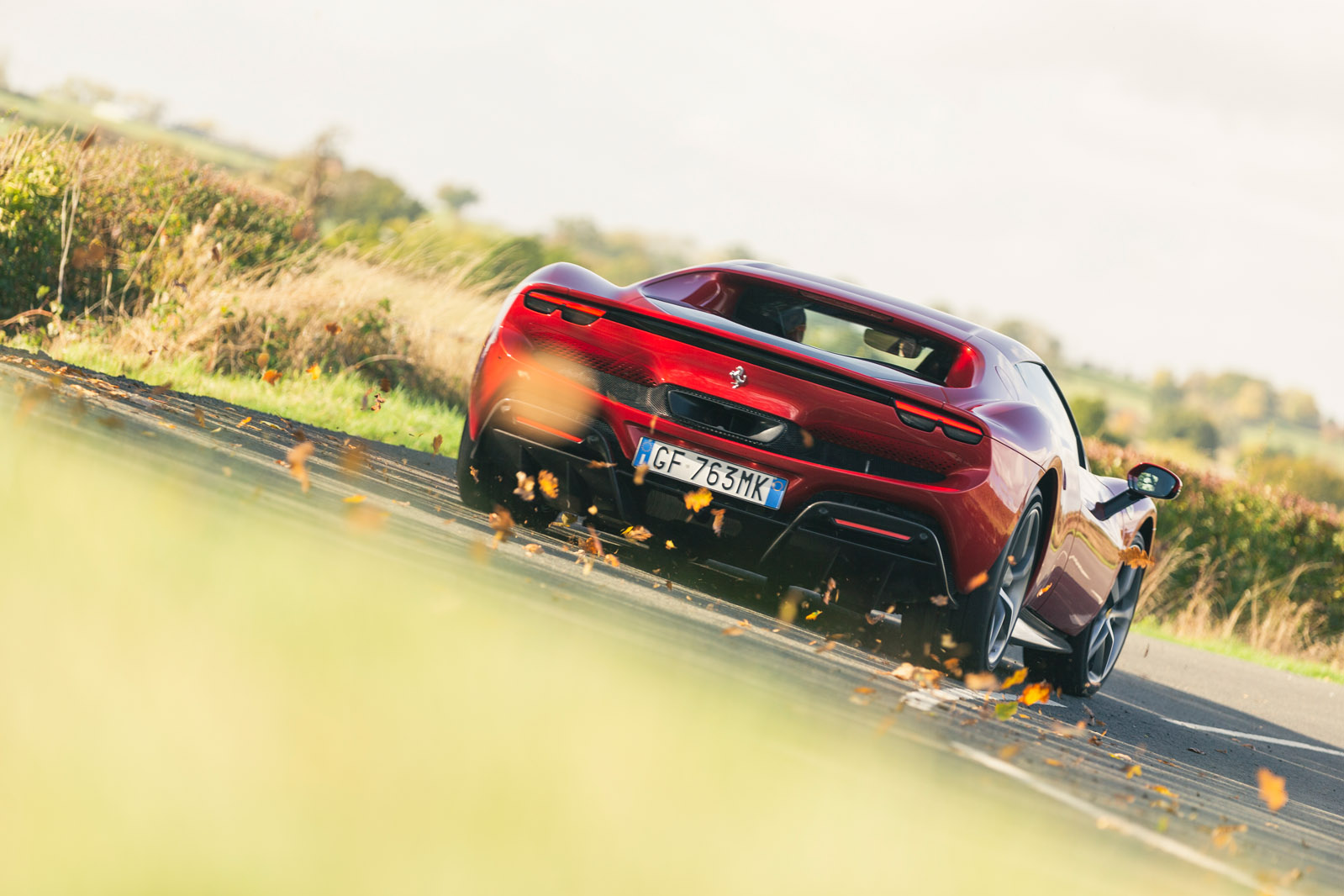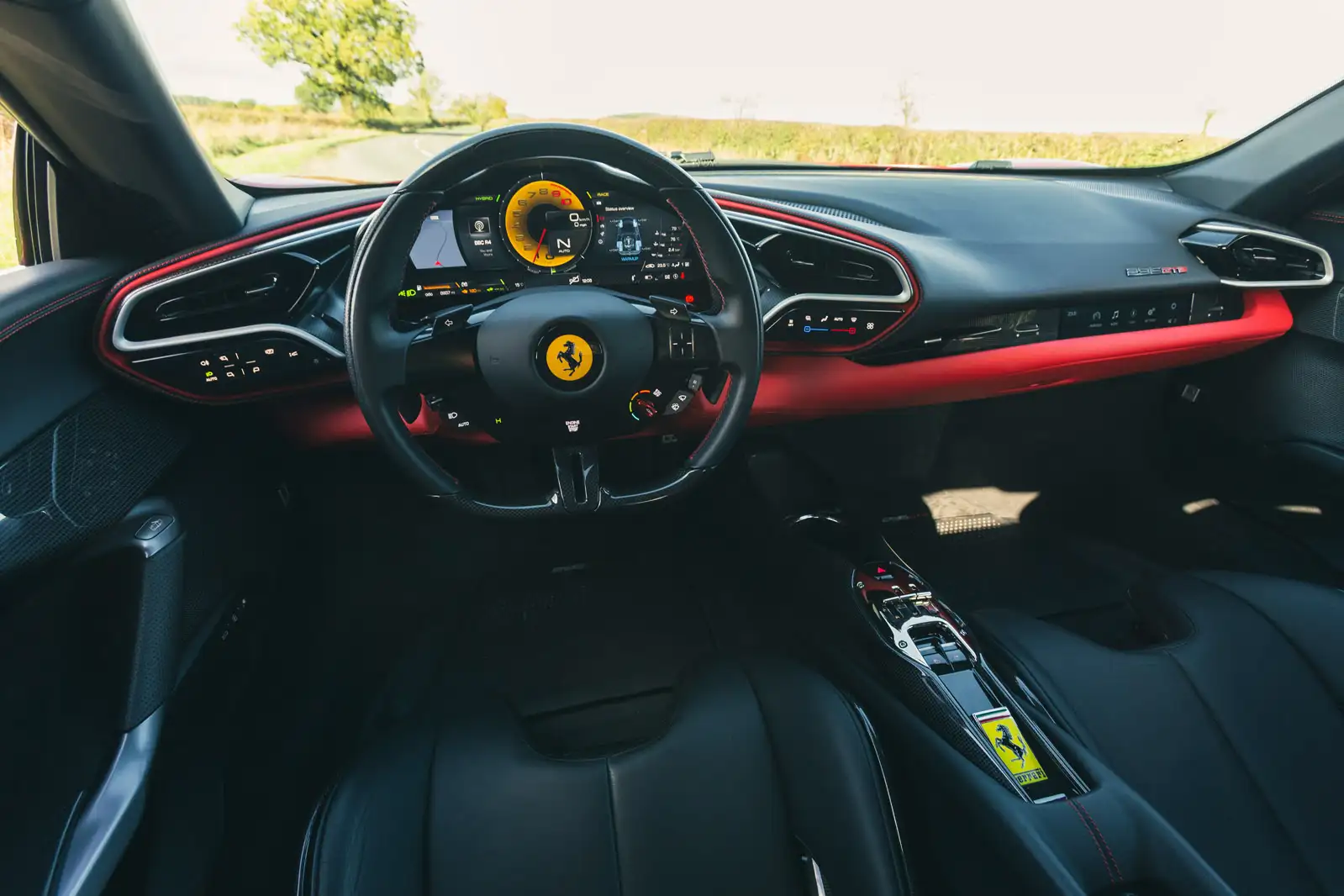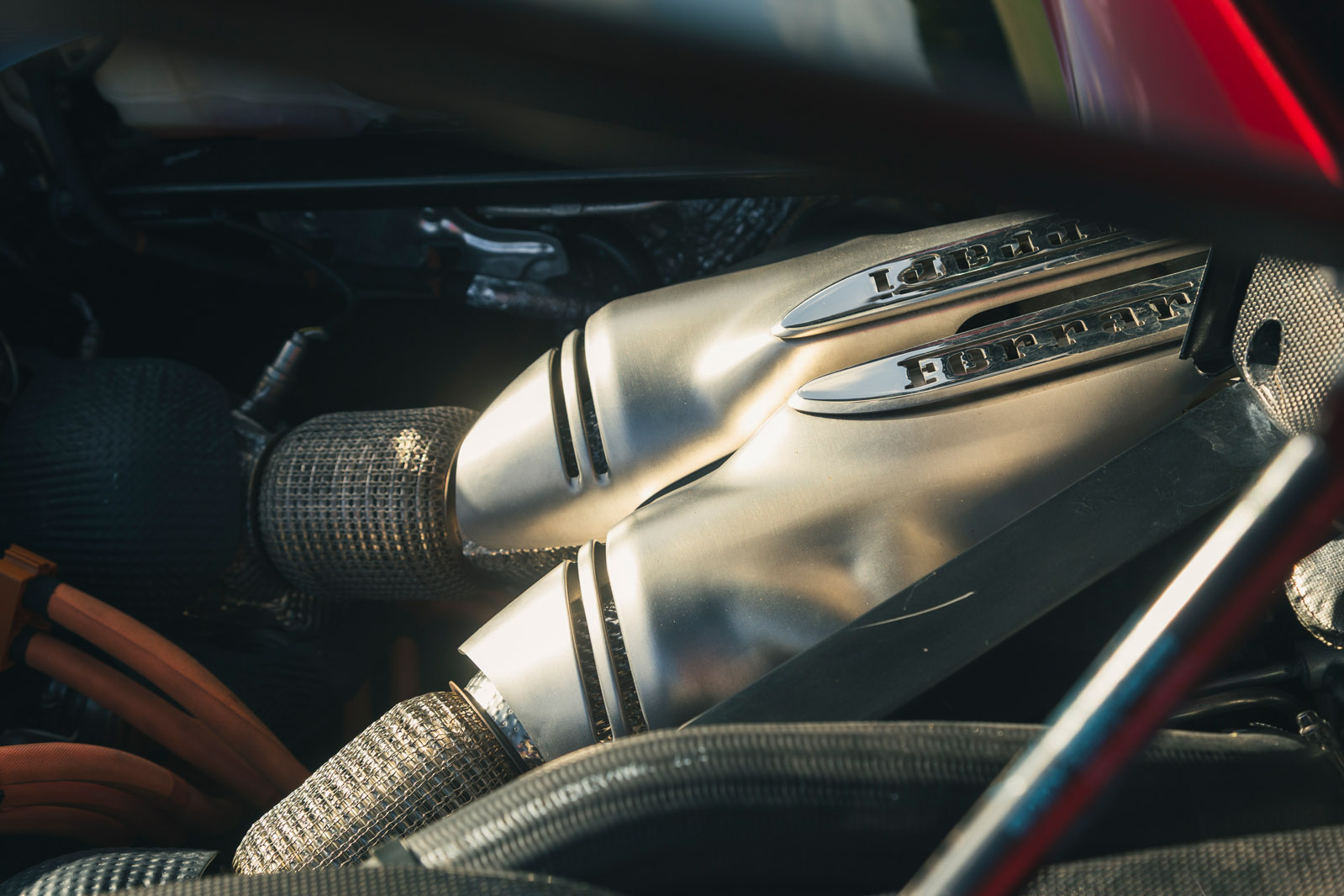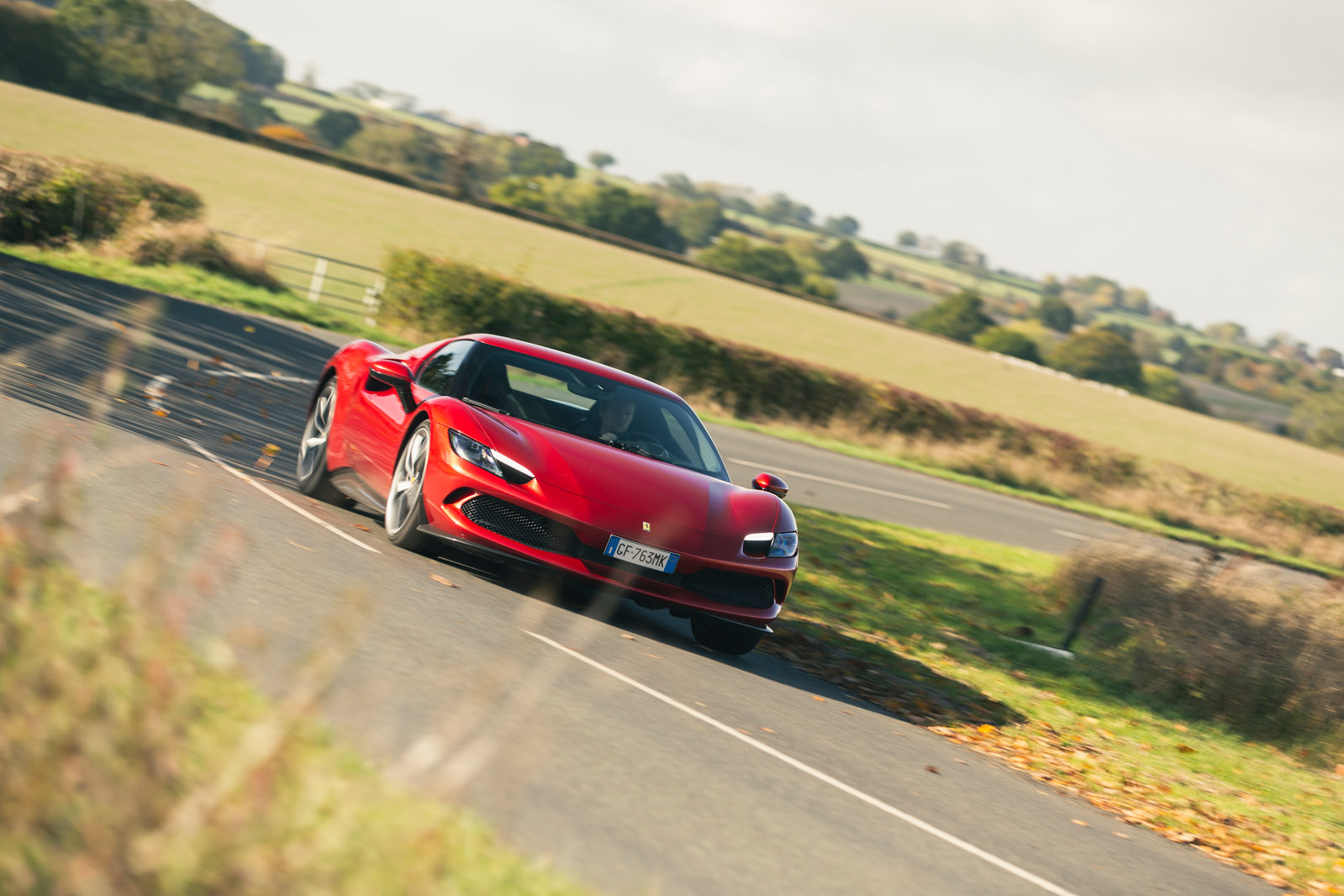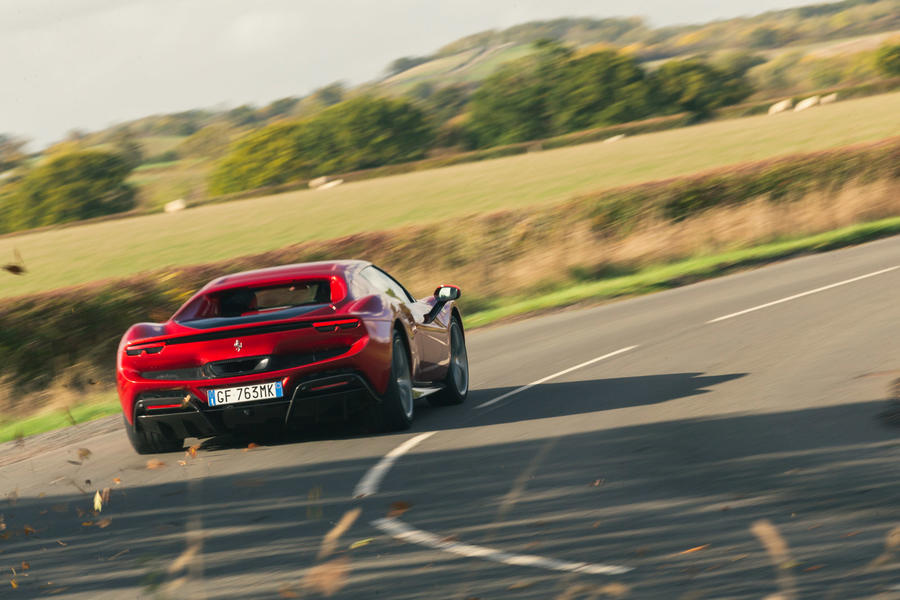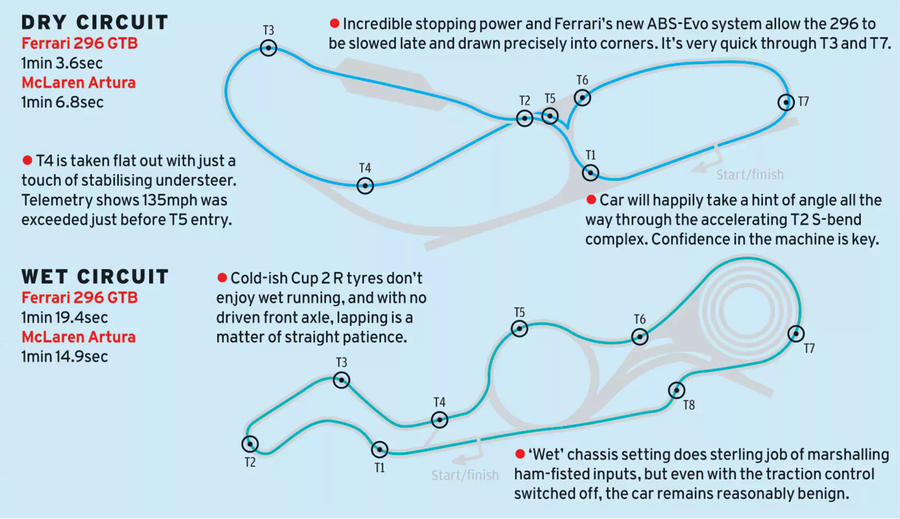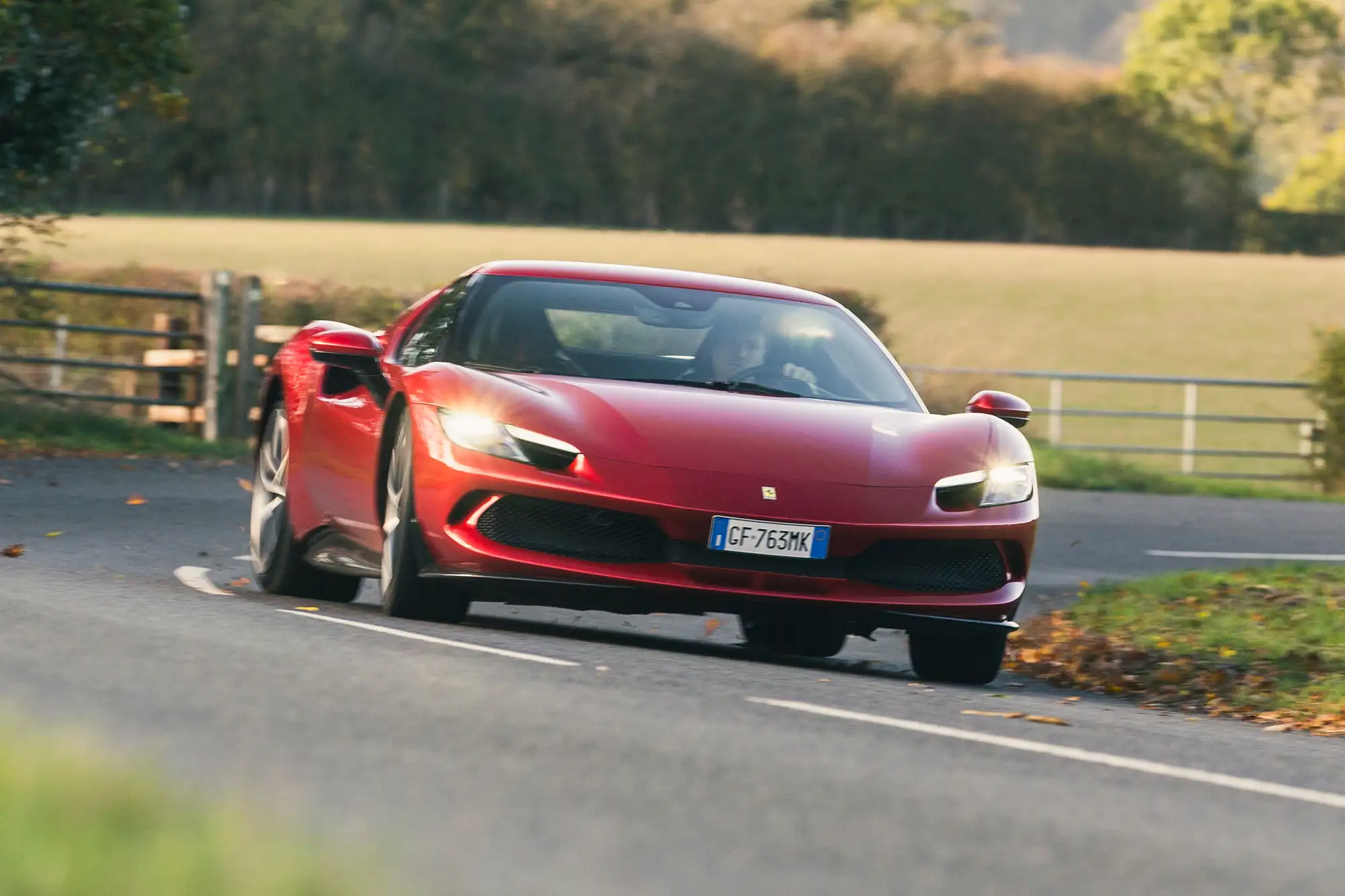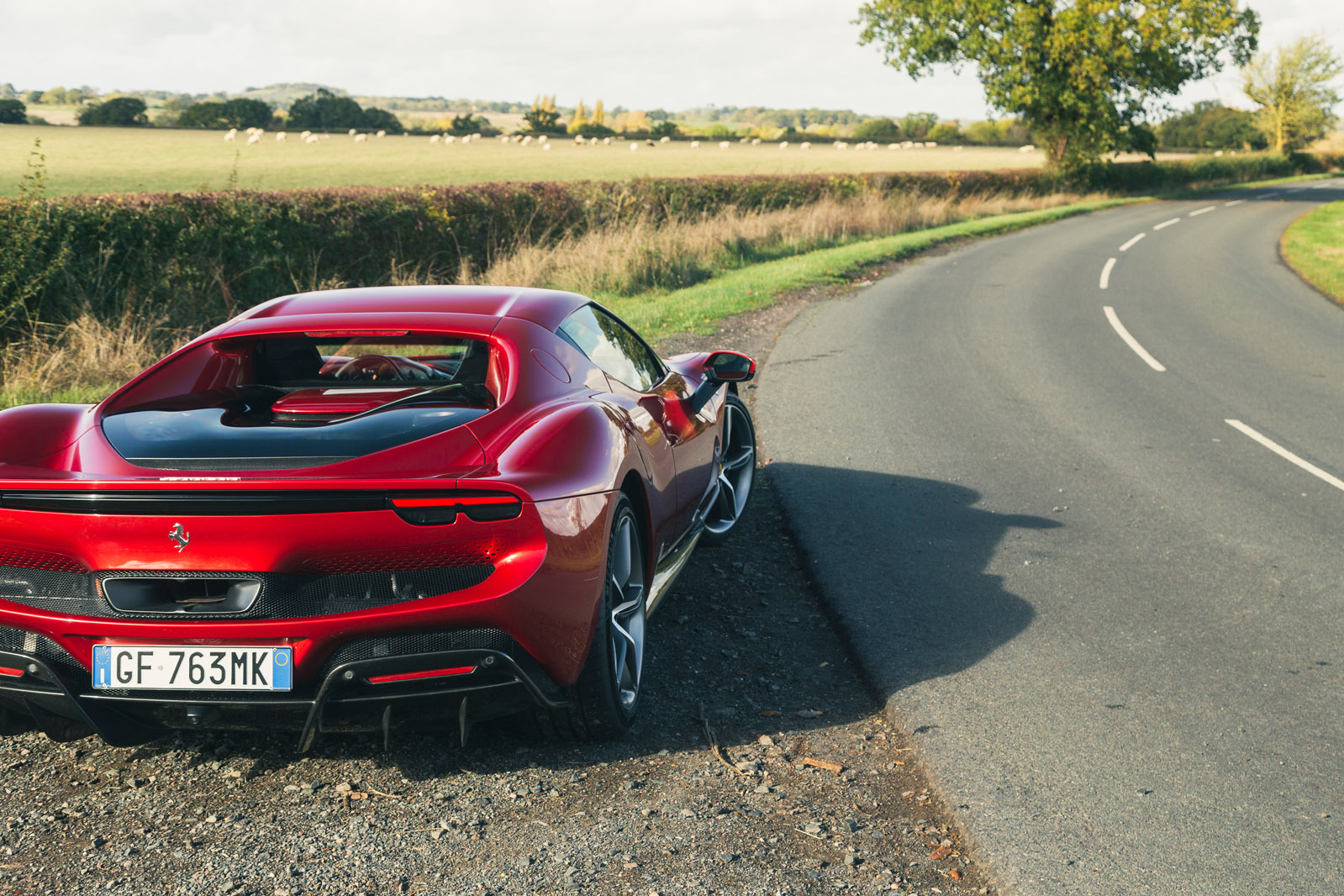When launching any new model, car makers tend to reference the model being directly replaced. That makes sense because the two cars are usually closely related and comparisons easily drawn. So it’s a mark of just how novel the Ferrari 296 GTB is in the eyes of its maker that the very first car referenced in the official press literature is not the recently retired Ferrari F8 Tributo but a 1500cc Formula 2 car from 1957.
Why would they bring up the Dino 156? Because the little single-seater was the company’s first V6-engined car, and the 296 GTB tested here is the first Ferrari-badged road car to use V6 power. This momentous and legislation-charged step-change in approach comes after decades of mainline mid-engined Ferraris powered exclusively by V8, and cylinder count is only one part of the story. The other is hybridisation. Although the sensational LaFerrari of 2013 marked the moment when Ferrari’s electrification strategy leapt from the racetrack to the road, and the technology was substantially developed with the plug-in hybrid Ferrari SF90 of 2019, the 296 GTB brings electrification to mainstream Ferrari supercars. This is now the way of the world: the 296 GTB already has company in the form of the excellent McLaren Artura and both will soon be joined by Lamborghini’s Huracán replacement, with others to follow.
But what does all this mean for the would-be Ferrari owner? A threat to that most Ferrari of elements – a soulful powertrain? Extra weight that might drain away some of the handling magic? Exorbitant cost? An onslaught in complexity? Possibly all those things. Or none. Let’s find out.


